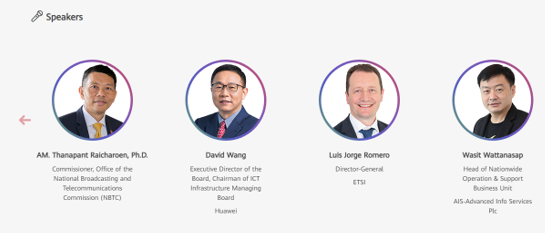We virtually attended several keynote presentations from the Ultra-Broadband Forum (UBBF) in Bangkok, Thailand. This year, as has been the case for every year since the first one in 2014, Huawei is the most prominent vendor in attendance; others making presentations included government officials, leaders of standards bodies, and service providers. The big pitch for this year’s UBBF was F5.5G, which maps to an ETSI standard that Huawei is simultaneously promoting. Many other speakers, including Thai government officials and operators, also advocated for F5.5G, either as a standard or as an ideal that furthers the goal of more broadband. In addition to promoting F5.5G, Huawei – as in years past – advocated for the IETF IPv6 standard.

The general idea behind ETSI’s F5G-Advanced (which for this UBBF was used interchangeably by Huawei executives with the “F5.5G” terminology) is that it is an interim step between F5G and presumably the next one, F6G. A member of ETSI presented at the UBBF show and reminded the audience that F5.5G is intended to be seen as running in parallel to 5.5G in the wireless sense. When Huawei executives spoke on the topic of F5.5G, many of the products and services it promoted were similar to those it discussed with F5G. Among the prominent F5.5G concepts/products promoted by Huawei included were: (a) 50G PON, (b) Super C+L (referring to optical transport), (c) C-WAN (explained as coordinating Wi-Fi signals in residences), and (d) Wavelength Pooling WDM (flexible sharing of wavelengths across multiple WDWM rings).

We think that the important takeaway here is that, like other companies in the industry, Huawei is working with standards bodies, regulators, and operators in friendly countries to ensure its corporate vision will be adopted by a broad audience. We see that many Western telecom equipment vendors are cozying up to different standards bodies for generally similar technologies – but they use different terminologies and convey different timelines for adoption. We are hopeful – but not confident – that Huawei’s sphere of influence and Western vendors’ spheres match up and lead to common telecommunications standards adoption worldwide.